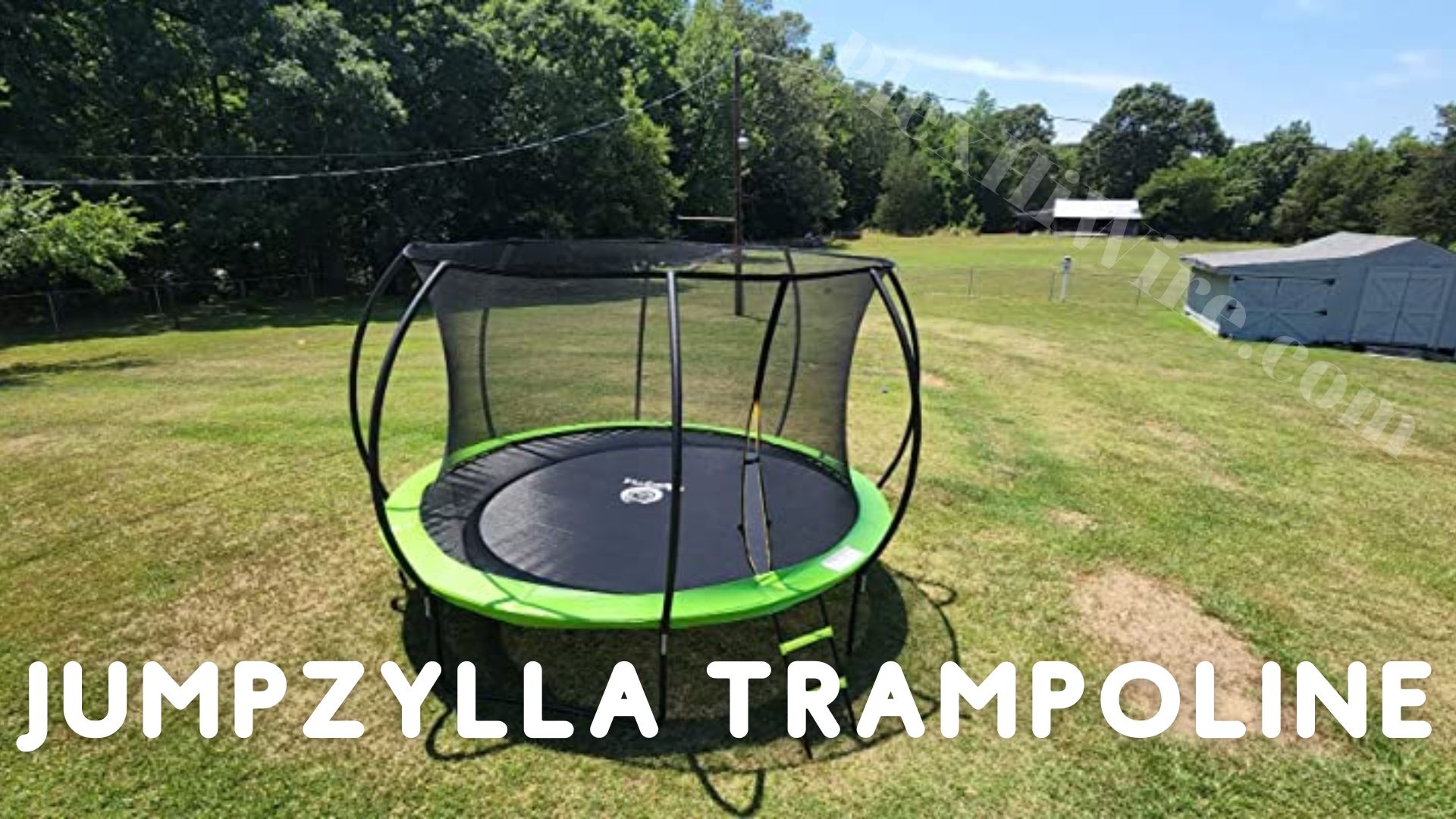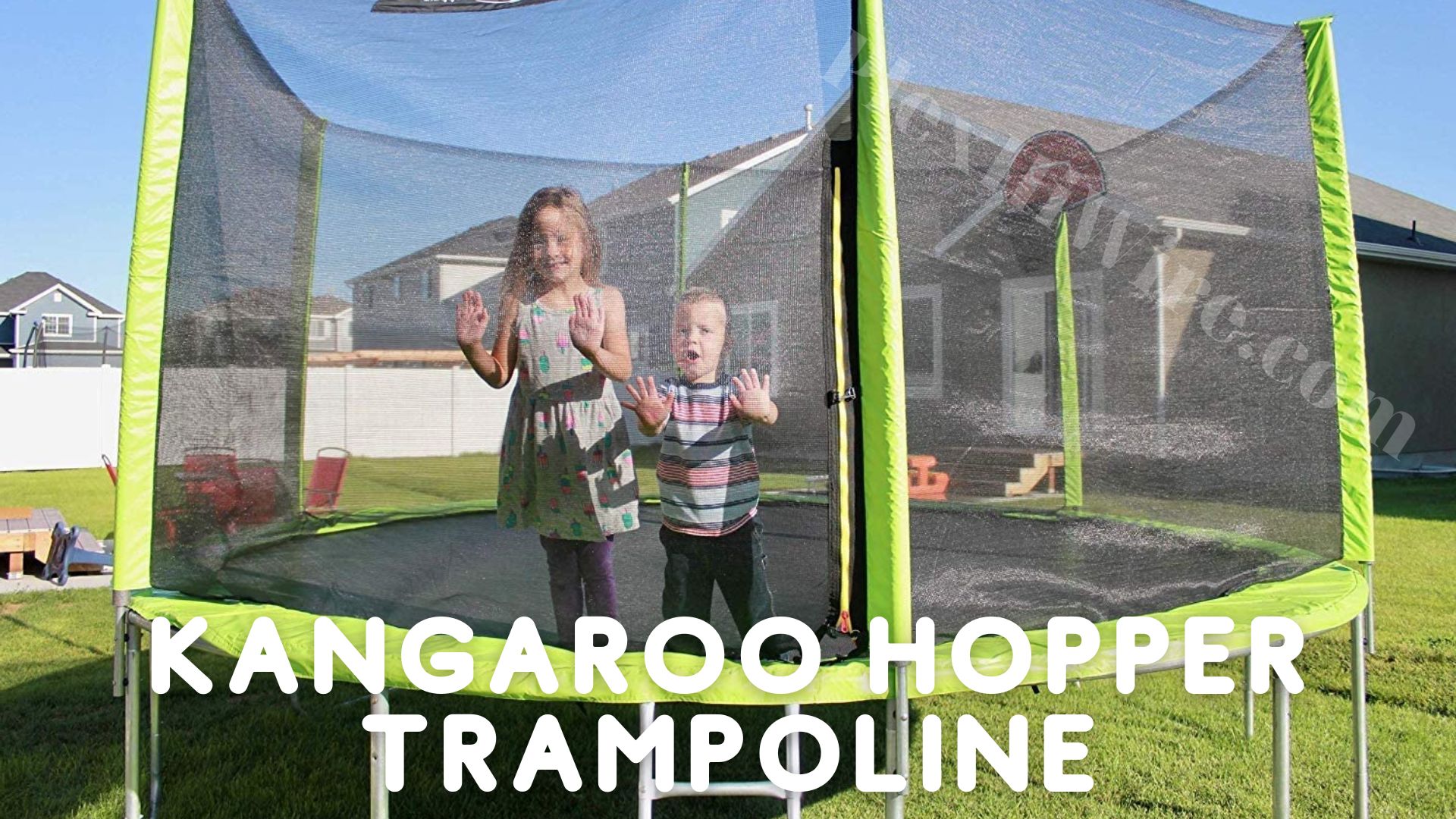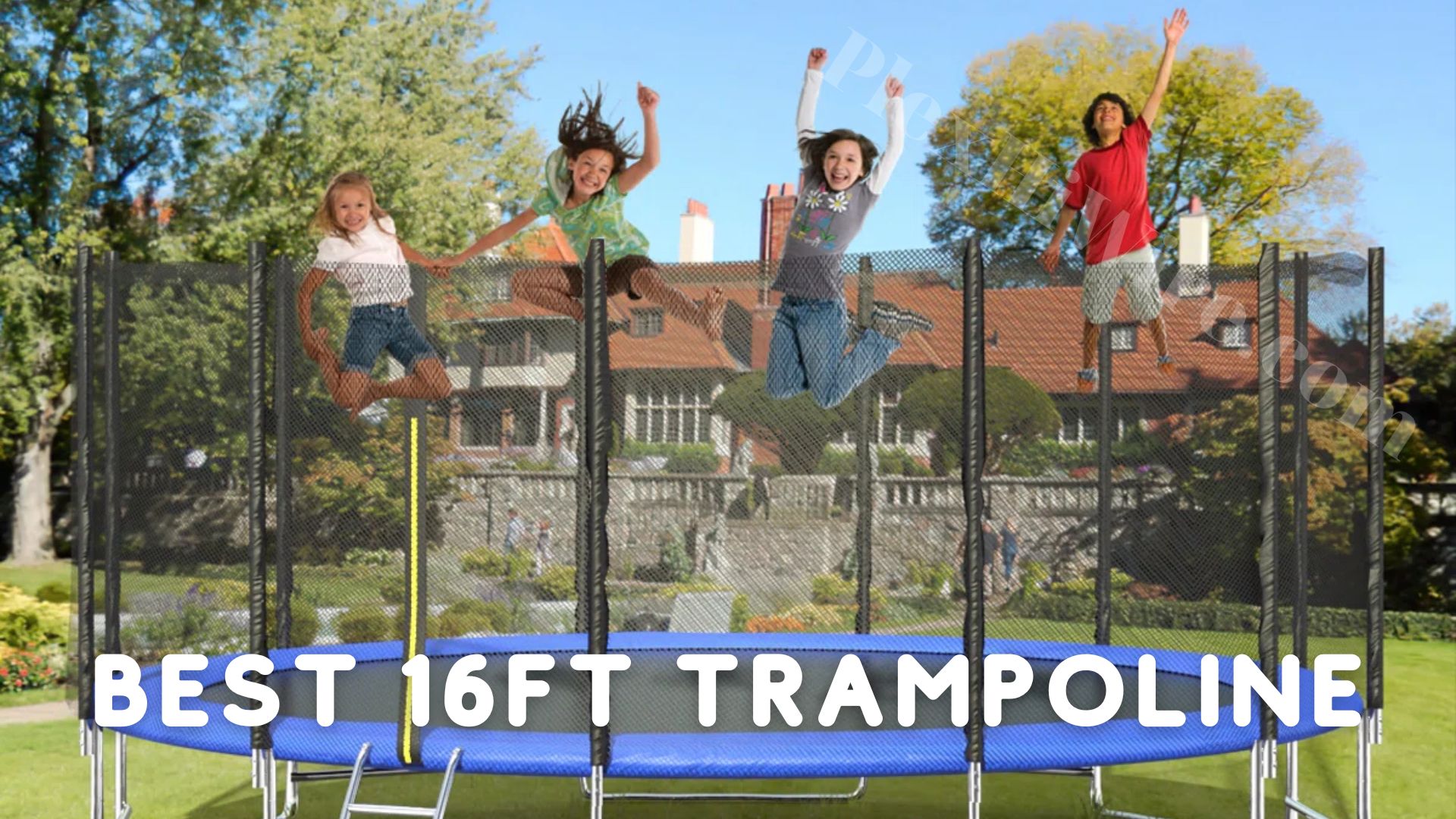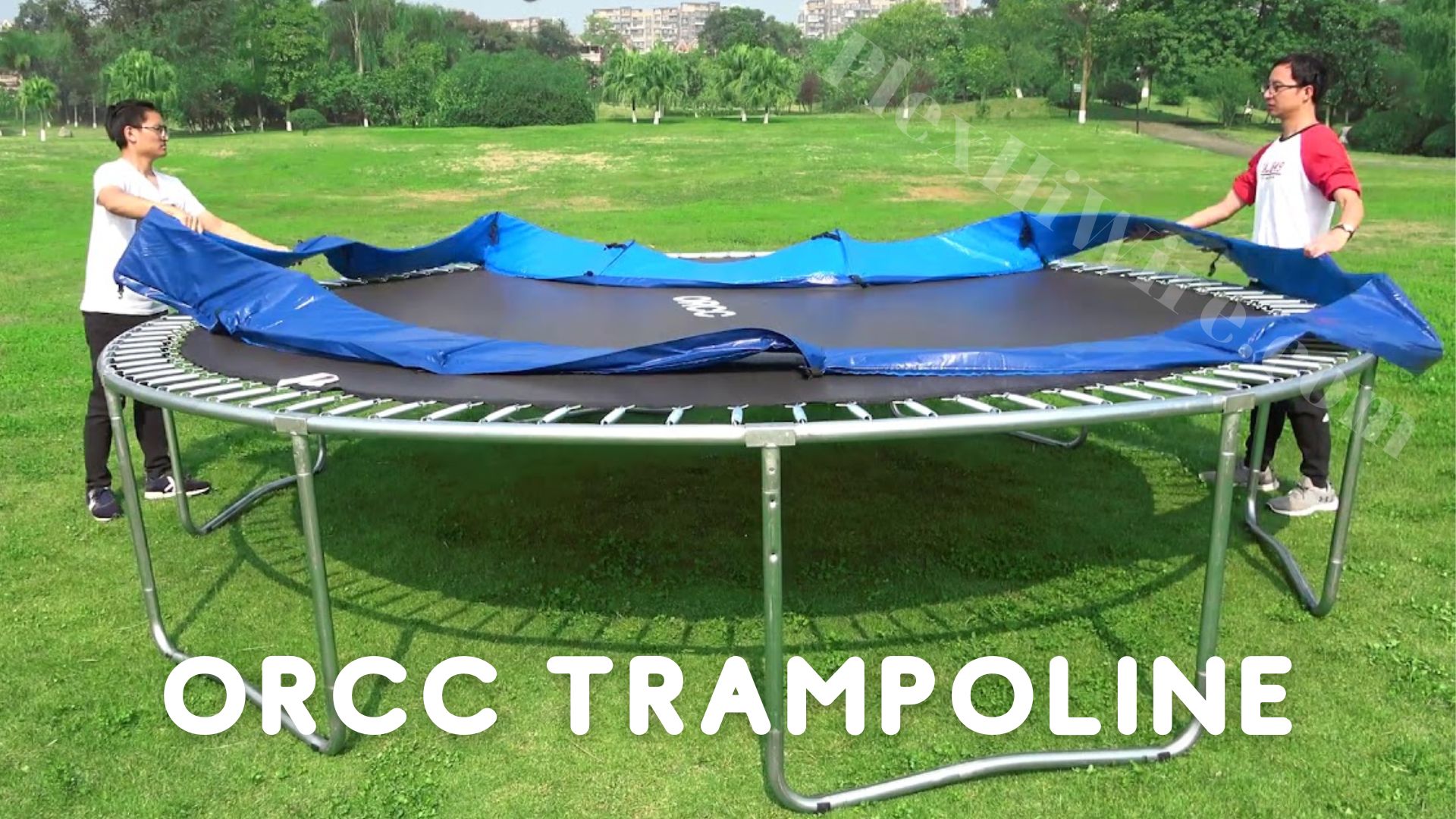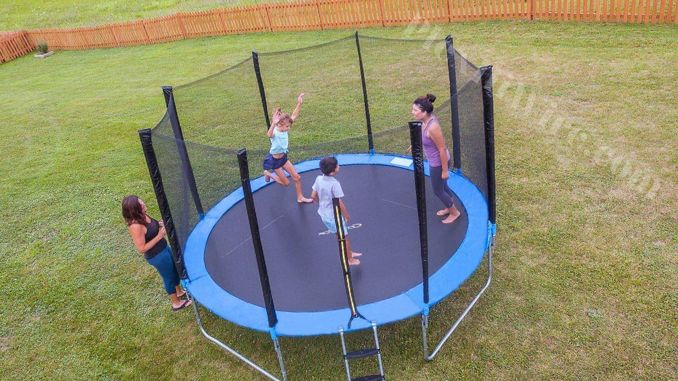How to Install The Trampoline With a Net
When a trampoline becomes popular with children, it’s not uncommon for them to be in high demand. Bouncing up and down provides an exciting activity that is great exercise and helps keep the little ones healthy by providing stimuli on both ends of their sensory system. But without proper safety precautions taken into account, 95%+ accidents happen due primarily to spine fractures or head wounds which can result from lack of upkeep when you don’t have netting installed around.
If you have a trampoline in your backyard, it’s important to know to way trampoline safety net enclosure. This will help keep your children and others safe while they are jumping. It might seem like a complicated task, but in reality, it’s not too difficult if you know what to do. Plus, following my installation process will save time and frustration for everyone involved.
In the article “How to Install The Trampoline With a Net”, we will share with you tips about trampoline net. So, make your game more enjoyable and safe. Read this article for more details.
See more: How to Trampoline Anchors
- What is a Trampoline Safety Net?
- Why Do Trampolines Have Nets?
- Is Adding Your Own Net Possible?
- What to Look for in a Safety Net?
- How to Put a Safety Net on a Trampoline
- How Can You Make Sure Your Children are Playing Safely on the Trampoline with a Net?
- How Much Safer are Trampolines With Nets vs Without Nets?
- How Do Safety Nets Work on a Trampoline?
- Do Trampoline Nets Prevent Accidents?
- Is It Better to Have Trampoline Net Inside or Outside of Springs?
- How Much is a Trampoline Net?
- Tips When Using Trampoline Net
- What are The Benefits of Using a Trampoline With a Net?
- How Do You Tie The Net to The Bottom of a Trampoline?
- How Long Does It Take to Set up a Trampoline with Safety Net?
- How Do I Fix My Trampoline Net?
- Is It Worth Buying a Trampoline With a Net?
- Frequently Asked Questions
- Conclusion
What is a Trampoline Safety Net?
Trampoline safety nets are a good idea to keep your children safe while they bounce. Made from durable material, it prevents balls and people from getting injured on the trampoline while they’re jumping around joyfully. They have been known as one of the most important parts in protecting kids from getting hurt on their own trampolines, but there is always room for improvement. Nevertheless, the safety net is a must-have for parents who want to keep their children safe.
It is not surprising that trampoline accidents happen. After all, it’s an activity where you’re bouncing and falling! But what does surprise me? The development of these safety nets makes for much safer playtime. It’s a great way to keep your kids safe while they’re having fun.
If you have a trampoline, it’s important to install safety netting. The safety net on a trampoline does wonders for preventing injuries. In addition, the invention of the original bounce house has led to significantly fewer injuries over time, and this trend is expected to continue as new designs are released that utilize safer technology for jumping fun!
Why Do Trampolines Have Nets?
Trampolines have nets to protect people from falling off and getting hurt. When trampolines were first invented, they didn’t have nets. But after people started falling off and getting hurt, trampoline manufacturers realized that they needed to add a safety net. Trampoline safety nets are made of strong, durable material that can withstand a lot of weight and force. A trampoline safety net enclosure helps to keep jumpers on the trampoline and away from the hard metal frame. It also provides a cushion if someone does fall off, reducing the risk of serious injury. In addition, a trampoline with a net is more likely to be used in a supervised setting, which can help to prevent accidents. This way, people can still enjoy the trampoline experience while being safe. Trampoline safety nets are a necessary trampoline accessory for any trampoline owner. For all these reasons, trampoline safety net enclosures are an essential piece of safety equipment.
Is Adding Your Own Net Possible?
A trampoline with a net is one of the best things you can do to improve your setup. It will keep you safer while you’re playing on the trampoline and provide a more enjoyable experience for everyone who uses it. If you’re unsure whether you should add a net to your trampoline, here are a few things to consider. First, trampolines with nets are significantly more safe than those without. This is because the net provides a barrier between you and the ground, which means that you’re much less likely to be injured if you fall off.
Trampolines with nets are also more fun to use since they allow you to perform tricks and flips without worrying about falling off. Finally, trampolines with nets are easier to set up and take down since they don’t require additional parts or pieces. Additionally, we need to know what type of safety net we want before deciding whether or not to attach it to the trampoline frame.
What to Look for in a Safety Net?
To ensure a safe and enjoyable experience, we need to make sure your enclosure is compatible with the trampoline model. Luckily for you, some key factors should be considered when choosing an appropriate safety net!
We’ve put together this list of things worth taking into account so read on as I tell you all about them, including which type might suit best depending upon what kind of surface area material it’s made.
Weight
The weight of a safety net is important because it determines how long the device will last and what kind of trouble there might be with it. Therefore, in order to ensure that your kids are as safe and secure while playing outside, you must choose the right safety net. For example, lighter nets are easier to topple over or bend/after frequent use, while heavier ones have better wear and tear properties which means they’re less likely than their counterparts in this regard.
Door
When it comes to safety, the door is often seen as a weak point. This could lead someone to bounce off of your trampoline and through its secured entranceway. To ensure that this doesn’t happen with any surprises around every corner, make sure there’s sturdy protection in place by picking out some secure doors for yourself.
So which door is best for your trampoline? Some safety nets have doors that resemble curtains, and it’s important to avoid these. On the other hand, the best type of door to use when installing a new enclosure on your property is safety net doors with heavy-duty zippers that will do the job just fine, tough enough zipper.
UV Protection
We all know that the sun can be dangerous for our trampolines. We’ve seen countless cases where people had their springs break down from long exposure to bright sunlight, and we don’t want anything like that happening with yours too! That’s why it might help if you looked into getting some sort of UV protection on any safety net or mesh grid; just make sure they offer this as an option before buying anything else.
Weave
Our final factor to look for is the weave of the net. Safety nets are prone to damage, and it’s quite common to see tears in them because they’re not built durable enough. Still, we can minimize their occurrence by installing heavy-duty safety audits with more robust. Weaves also provide an added boost to protection against tearing or flipping apart easily.
How to Put a Safety Net on a Trampoline
Putting up a net on your trampoline will differ depending on the size and model. So, putting in a net can be different for 6 feet tall ones versus 8 or 12 ft models.
The instructions I’ll share with you today are generic in nature, but they may be slightly different from the process of setting up your own trampoline. This is not always an easy task, but I’ll explain a generic instruction that should work for most types of springs and nets.
Everything you need
The following is a list of tools that may be useful while putting on the net.
- Enclosure net
- Rope
- Lower poles
- Upper poles
- PVC sleeve
- Pole caps
- Rubber Mallet
- Phillip screwdriver
- Spring pulling device
Gather everything
The first thing you need to do before installing a trampoline net is gathered all of your supplies. This includes poles, the mesh (usually called “netting”), hangers for mounting on walls or ceilings to ensure nothing gets hooked onto it, connectors, and others.
Ensure a free space
The trampoline is great for making sure your kids are having fun, but it’s not safe if there’s anything nearby that could cause injuries. So I recommend setting up the net on free space and when you put in place stakes, make certain to clear away all obstacles like fences or trees since these might hurt someone jumping onto them unexpectedly.
Install the poles
After you have gathered all the pieces, assemble them and attach them to your trampoline. Stay attentive while setting up all those pieces in just the right spots; you’ll need this for safety.
Cover the springs and poles
There are many ways to keep your kids safe, but if they fall in the spring, it is still dangerous. So I suggest putting some foam around poles and covering it with soft covers so that no one can tell there’s a net underneath.
Placing the net
When you are done with the netting, take one more, unfold it, and spread it over your trampoline. Find where each sleeve goes on either side of the poles, then tie them off properly to keep everything secure while also ensuring not too much time has passed since placing this part was completed.
Fix the bungee cord
Anything left in the toolbox? A bungee cord, right! The bungee cord is a simple but effective device that can be used to protect both kids and adults from underneath their netting.
Once the net is installed on top of your trampoline frame, place one end around a bungee cord and connect it with another section. This will keep everything secure while also giving an element of fun.
Secure the net
The net is already installed but not yet secured; make to keep it firm and flexible, just tie the cord to a good sturdy branch or post above ground level so that there’s no risk of loss due to a tree falling on top of your home!
Testing
The inspections are critical to ensuring your net and poles stay in place. Make sure you inspect the connection points for both sides and each individual rope’s termination on either an anchor or treetop ring equipped with safety chains before operating any type of equipment.
Netting is complete, and the testing process isn’t finished yet. So make sure that when you test it out, there won’t be an unexpected moment where your net could fall down on its own accord to avoid any accidents.
How Can You Make Sure Your Children are Playing Safely on the Trampoline with a Net?
- Make sure the net is securely fastened at all times and that it fits snugly around the trampoline frame.
- Make sure your children are not jumping over or through the net.
- Set ground rules for bouncing, such as no doing flips or somersaults, and make sure they’re followed by everyone using the trampoline.
- Place a soft surface such as padding or mulch beneath the trampoline to help cushion falls should someone slip off the sides of the netting onto the edge of the trampoline matting.
- Check all parts of the net regularly to ensure there are no rips, tears, or holes that could let a child go over or through the net.
- Make sure your children know to never try to jump over or climb on top of the trampoline netting.
- Keep an eye on your children at all times while they are playing on the trampoline, and be prepared to intervene if necessary.
- If any part of the trampoline becomes damaged, replace it immediately, and do not allow anyone to use it until it has been repaired properly.
- Ensure there is only one person on the trampoline at a time, and that they have plenty of room to move around without risking injury from bumping into each other or running into the edge of the netting.
- Have regular inspections to check the trampoline’s condition and make sure it is still in a safe condition for use.
How Much Safer are Trampolines With Nets vs Without Nets?
While there are no specific studies that show the percentage of off-trampoline injuries versus those that happen on the mat, however, there is a growing number of studies that highlight the dangers associated with off-trampoline injuries.
However, trampolines with nets are much safer than those without. The most common trampoline injuries include crashing into other jumpers, problems with exposed springs, and rolled ankles. It is important to note that when safety netting, compare these risks against the potential benefits of using it.
Injury is a very real risk when it comes to off-trampoline accidents. Bruises, sprains, and fractures are all too common in cases involving falls from great heights or contact with other objects.
Landing on a soft surface like the mat will cushion some of your landing impacts and help you maintain balance.
The chances of sustaining a significant injury are significantly reduced with covered springs and net.
There are no hard numbers for how far you need to fall in order to break every bone, but it’s estimated that ordinary people will suffer broken bones if they jump 8 feet with their normal or attempted landing.
Most of these are around 3-4 feet off the ground, so make sure you know what’s safe for your kids.
That’s a great point! The springy mat really helps you gain altitude and velocity, so it won’t be hard to make an educated guess that most long-bone breaks in young people happen when they jump high but miss their edge on the ground. As a result, they fall onto harder surfaces at wrong angles causing serious injuries like fractures or dislocations.
How Do Safety Nets Work on a Trampoline?
The safety net on a trampoline works by catching jumpers the same way as an iron fence at the home or fence at a batting cage might catch missed balls.
The net is strong and durable, with a flexible design that can absorb impacts from jumpers. It can withstand the impact of jumped athletes without bending or tearing by disbursing their kinetic energy and cushion impact by flexing backwards.
When an athlete jumps, the wave of energy from their jump ripples outward and is absorbed by 1000s of small, individual strands.
When one person goes 40 mph, 50 000 threads take up that energy and move. Other lines nearby are likewise affected by this transfer until all of its potentials have been released, or absorption occurs. Then, it transfers to the poles until all of them have been disbursed.
Do Trampoline Nets Prevent Accidents?
The trampoline net is a great safety feature that prevents many injuries. While you can still land badly on the mat or jump over open-topped nets, almost all off-trampoline accidents happen because of them and will be avoided with their help.
The safety of your jump is our number one priority. Therefore, we recommend that you replace old, worn, or torn netting to ensure a safe experience for everyone involved with the sport.
The trampoline safety net is a great investment to make for your family. These items’ most common warranty length is between 1-2 years, but you can purchase an extended protection plan if needed.
Is It Better to Have Trampoline Net Inside or Outside of Springs?
A trampoline is a great addition to any backyard, providing hours of fun for children and adults alike. However, trampolines can also be dangerous, with the most common injuries being falls, ankle rolls, and crashes. One way to help reduce the risk of injury is to place the trampoline net inside the springs. This reduces the jumping area to only the actual mat, making it less likely for a foot or other body part to become caught between springs. In addition, the net provides a barrier that helps to prevent falls and crashes. Not only does this make for a safer trampoline, but it also gives you some extra peace of mind when your kids are playing. As a result, a trampoline with a net is a safer option for families with young children.
How Much is a Trampoline Net?
Anyone who has ever trampoline without a net can attest to how dangerous it is. A trampoline net acts as a safety barrier, preventing jumpers from falling off the trampoline and injuring themselves. Trampoline nets are available in a variety of different sizes, depending on the size of the trampoline. While the average price for a trampoline net can range anywhere from $40 to $150, it is a small price to pay for peace of mind.
Skywalker is one of the most expensive brands on the market, but they are also the most reliable and come with the best reputation. However, plenty of other reliable brands offer easy-to-install and safe nets at an affordable price. So ultimately, the decision comes down to personal preference. But one thing is for sure: a trampoline is not complete without a net.
Tips When Using Trampoline Net
Burning calories on a trampoline is a wonderful thing for those who are looking to lose weight. Moreover, it has many other benefits, such as promoting heart health and bone density. However, if you think those benefits bring “safety” to you, don’t be too happy. Because it also brings with it the problem of getting injured without a protective net.
Here are some tips on avoiding injury and having the best fun possible.
- Jumping on a trampoline is fun but can also be dangerous if you don’t know what to do. One way of staying safer when playing around with your friends or siblings would involve being mindful about taking turns and having someone else nearby who may help spot any injuries. Additionally, avoid extremely high bounces or flips as they can be dangerous for some people who might not know how their bodies will react in certain situations.
- It sounds like jumping on a trampoline can be beneficial for your growth plates! The bones that make up our bodies are always changing and growing. When you jump without protection, it is possible to break these fragile pieces of tissue called fractures or sprains, which could cause long-term problems if left untreated. According to Kids Health, “Most fractures heal without affecting future bone grows,” though sometimes changes in this area will affect how we look later on (for example, crooked or shorter than expected).
- It is possible to jump over an open-topped net or tip a trampoline with enough momentum. To avoid flying over the enclosure, keep your jumps low and make sure no part of you leaves it while jumping on this device. It’s important to make sure the trampoline is level and firm so it won’t tip when you jump on. You can do this by adding weight onto its legs or, even better yet, using sandbags.
- The chances of breaking a bone while jumping are not just limited to outdoor trampolines. In fact, 95% happen at home, most likely from your own backyard! However, another type can cause problems, too: indoor ones used for exercising or playing sports like basketball and volleyball (or even fenced-off areas). These places may have safety measures in place, but no matter what you do, nothing will stop an airborne body from impacting ground zero if you fall wrong.
See more: Is Trampoline an Olympic Sport?
What are The Benefits of Using a Trampoline With a Net?
Trampolines are a great way to get some exercise, have fun, and entertain guests of all ages. However, they can also be dangerous if not used properly. One way to help ensure safety while using a trampoline is to add a net. Trampoline nets provide several benefits:
- They help to keep users on the trampoline and prevent them from falling off.
- They help to deflect objects that may be thrown or dropped onto the trampoline.
- They provide a barrier between users and the ground, reducing the risk of injury in case of a fall.
- Nets also help to keep the trampoline clean by keeping leaves and other debris from blowing onto it.
When used properly, a trampoline net can help to create a safe and enjoyable environment for all.
How Do You Tie The Net to The Bottom of a Trampoline?
The first step is to gather all of the materials you will need. You will need a rope, a trampoline, and a net. The next step is to tie the rope around the trampoline’s edge. Ensure the knot is tight so the net will not come loose. The next step is to attach the net to the bottom of the trampoline. The best way to do this is to use zip ties. Again, ensure that the zip ties are tight so the net does not come loose. The last step is to test the net by jumping on it. If the net does not hold, then you will need to adjust the zip ties or retie the knots.
How Long Does It Take to Set up a Trampoline with Safety Net?
The answer may surprise you – the average time it takes to assemble a trampoline is three to five hours! That’s why it’s important to have a plan and be prepared before you start. If you need help, ask a friend or family member to assist you, or visit your local handyman today. By following these tips, you can be sure that your trampoline will be safe and secure in your backyard for years to come.
How Do I Fix My Trampoline Net?
You know how much fun they can be if you’re lucky enough to have a trampoline in your backyard. But over time, even the sturdiest trampolines can start to show signs of wear and tear – especially the netting. Fortunately, there’s no need to replace the entire trampoline just because the netting is damaged. Instead, with a little time and effort, you can easily fix your trampoline netting and extend its lifespan.
The first step is to remove the damaged netting from the trampoline frame. This can be done by carefully cutting it away with a pair of scissors or a utility knife. Once the damaged netting has been removed, measure the circumference of the trampoline frame so you know how much new netting you’ll need to purchase. When purchasing new netting, be sure to choose a durable material that will stand up to UV rays and weathering.
To attach the new netting to the trampoline frame:
- Start by threading one end of the netting through one of the lower rings on the frame.
- Stretch the netting around the entire circumference of the frame and thread it through the remaining rings.
- Tie the netting off to secure it in place.
With a little care, your trampoline will be good as new and provide hours of fun for years to come.
Is It Worth Buying a Trampoline With a Net?
If you will be using the trampoline for exercise, recreation, or entertainment, then a trampoline with a net is a good investment. Trampolines with nets provide safety and peace of mind while extending the trampoline’s life.
Frequently Asked Questions
How Long Does a Trampoline With a Net Last?
A trampoline with a net can last for many years if it is taken care of properly. Trampolines made with high-quality materials and construction can last for decades. However, trampolines that are not well-made or that are not maintained can fall apart much sooner. To help extend your trampoline’s life, follow the manufacturer’s recommendations for assembly, disassembly, and storage. Also, inspect the trampoline regularly for signs of wear and tear and repair or replace parts as needed.
How Much Does a Trampoline With a Net Cost?
The cost of a trampoline with a net varies depending on the size and quality of the trampoline. A small, basic trampoline can cost as little as $100, while a large, high-quality trampoline can cost $1000 or more. When choosing a trampoline, be sure to consider the intended use and choose a size and quality that meets your needs.
How Long Does It Take to Set up a Trampoline with Safety Net?
The answer may surprise you – the average time it takes to assemble a trampoline is three to five hours! That’s why it’s important to have a plan and be prepared before you start. If you need help, ask a friend or family member to assist you, or visit your local handyman today. By following these tips, you can be sure that your trampoline will be safe and secure in your backyard for years to come.
How Do I Know If My Trampoline Needs a New Net?
If the netting on your trampoline is damaged or torn, it is time to replace it. Also, if the netting is loose or saggy, it should be tightened or replaced.
What Are The Dimensions of a Standard Trampoline With a Net?
The size of a standard trampoline with a net is 10 feet in diameter.
How Do I Attach a New Net to My Trampoline?
To attach the new netting to the trampoline frame:
- Start by threading one end of the netting through one of the lower rings on the frame.
- Stretch the netting around the entire circumference of the frame and thread it through the remaining rings.
- Tie the netting off to secure it in place.
Conclusion
Installing a trampoline safety net is an easy way to keep your family safe while enjoying this popular backyard toy. It takes just a few minutes to set up and can be done by almost anyone. Make sure you have the right tools and follow these simple steps, and you’ll be bouncing in no time.
Our guide will help you find the best safety net as well as replacements if you ever need one. You also know how to put a net on a trampoline now too. A trampoline should be fun; you want to know your kids are safe and sound. If you have any questions about installing or replacing your trampoline net, please don’t hesitate to reach out to us for assistance.
If you have any new information, do not hesitate to share it with us, and if you have any questions, please comment below; PlexHiWire will reply to you as quickly as possible. Finally, please share this information with others if they want to know more about how to install the trampoline with a net. Thanks for reading.



